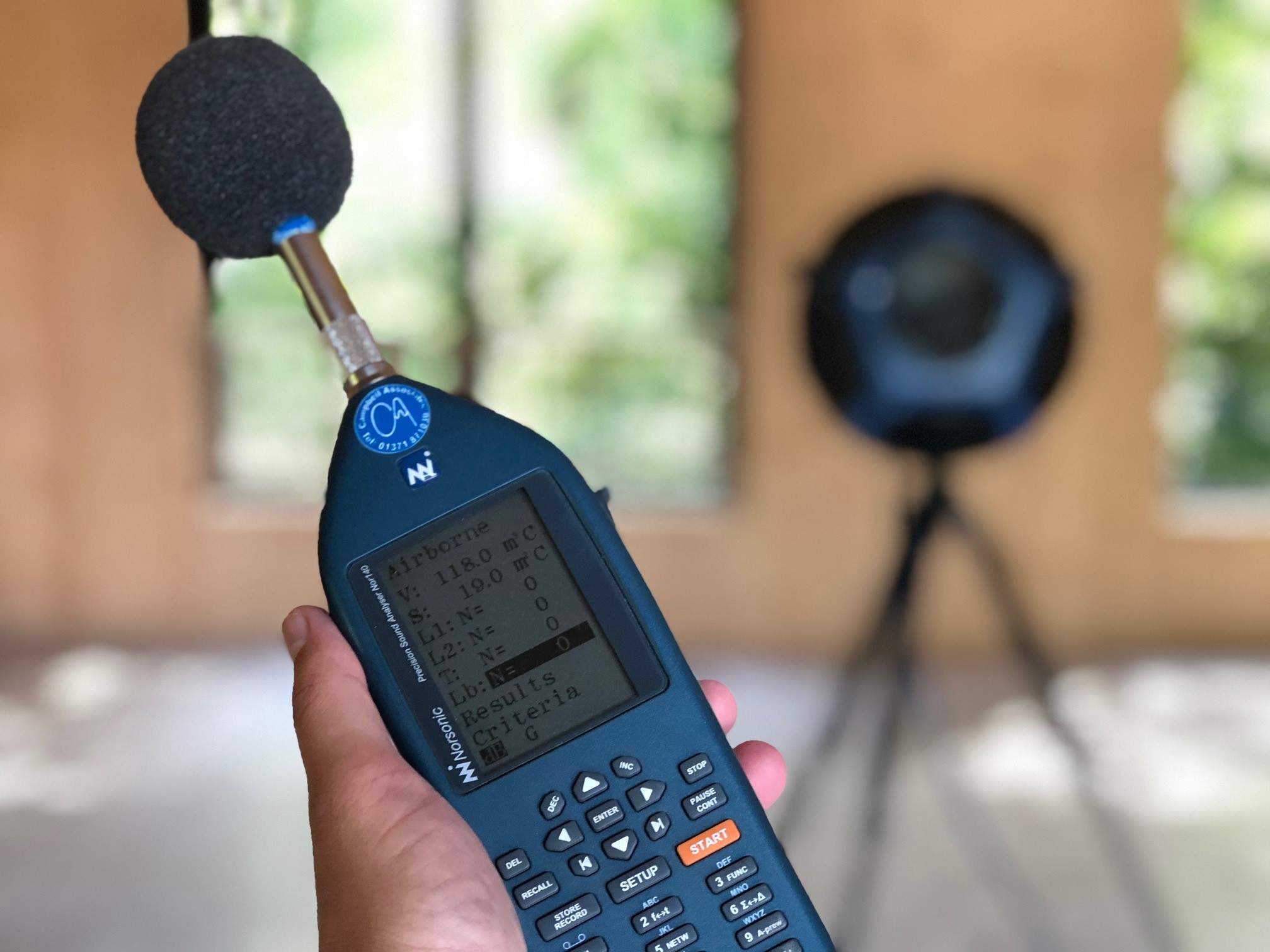Expert Sound Testing
There are two types of sound testing: airborne and impact tests.
Airborne sound testing involves placing a loudspeaker on one side of a partition wall while measuring noise levels on the other side to assess sound insulation.
Impact testing is carried out using a tapping machine on the floor, with noise levels recorded in the room below to evaluate sound transmission.



